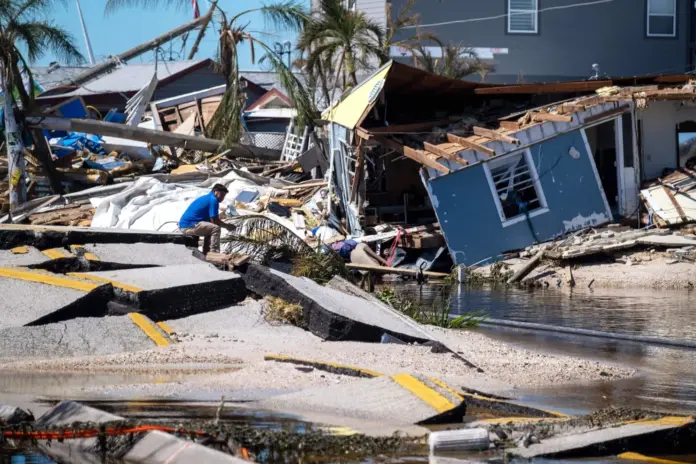Droughts and wildfires. Floods and hurricanes.
As the losses from these natural disasters skyrocket, a growing number of insurance companies are declining to offer or renew coverage in California and Florida, leaving 60 million Americans with dwindling options to comprehensively and affordably protect their livelihoods.
The numbers tell part of the story: In California, there have been eight disaster events since 2020 that have caused between $20 billion and $50 billion in damages combined.
In Florida, 16 severe storms or hurricanes since 2020 have caused between $100 billion and $200 billion in damages. That includes Hurricane Ian, which has emerged as the third-costliest storm in U.S. history.
The retreat of household-name insurance companies is one reason homeowners in Florida and California are seeing eye-watering increases in premiums — raising fresh questions about whether the already soaring cost of living in these two states is sustainable for its residents.
In California, the average annual home insurance premium is $1,300 today — up 16% from 2019 levels, according to the Insurance Information Institute, a group that represents the insurance industry. As more insurers have exited California’s borders, the state’s FAIR Plan Association, which was established for California homeowners who are not able to find insurance in the traditional marketplace, has seen enrollment numbers approximately double since 2019.
If that sounds like a lot, it’s got nothing on Florida, where the average homeowners insurance premium is now $6,000 — up 200% from 2019, according to data from the Insurance Information Institute.
Today, the Citizens Property Insurance Corporation, Florida’s state-run plan funded by its customers’ premiums, now serves as the largest and fastest-growing insurer in the state. The company now has some 1.4 million policies and counting — comprising roughly 1-in-8 Florida households — and up from fewer than 500,000 policies in 2019.
Analysis
At what point is it too financially risky to support people at risk? People in these areas are at a much higher risk of losing their homes and insurance companies know the financial stress they are putting on their clients with higher premiums. What is the cost vs risk of protecting one’s home? How does this impact the response to natural disasters or mass casualties? What are people giving up to save money and yet put their lives in fate’s hands?
“When you have economic factors amplifying risk-related factors, that’s where you get insurance companies that don’t want to make these decisions,” Blades said. The calculus then shifts to whether it’s worth it for the company to keep doing business in the state or “look at their bottom line and assess that their risk appetite needs to change,” Blades added. What is the ethical vs financial line?
This article looks at how insurance companies are responding to the greater risks. What are the residents doing to combat this if at all? How can communities implement change that will benefit them in the future? How can people work with the environment to change their situation? Maybe, redesigning houses or the landscape would be effective such as creating an underground housing system to hide from wildfires.




